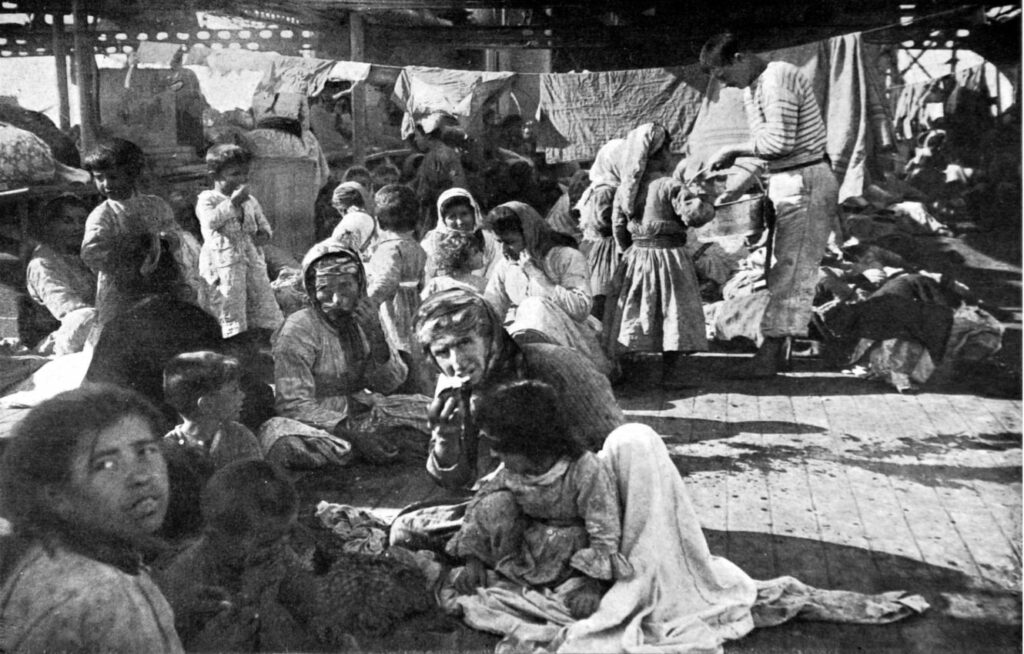Narrow, winding stairs lead up to 60-year-old housecleaner Ophelia Hakobian’s poorly furnished room on the second floor of an apartment building in the Istanbul district of Kumkapi. The tiny room, barely 1.5 square meters in area, contains hanging laundry, a table and chairs and photographs of Hakobian’s son and grandchildren.
“Is this a real life I’m living? I’m living like a slave here,” grumbled Hakobian, who migrated illegally to Istanbul from Armenia more than a decade ago. Each morning, she starts her work at 7 am; then comes back in the evening to sleep before starting another round of work again.
Nearly two years after signature of the protocols intended to normalize relations between Armenia and Turkey, bitterness between the two neighbors remains strong, but has done little to detract thousands of Armenians from migrating to Turkey in search of the work they cannot find at home.
While Armenia faces an official unemployment rate of 6.6 percent – lower than Turkey’s official rate of 9.4 percent – unofficial unemployment estimates soar into the double digits. The country’s economy is limping along after the 2008 financial crisis, posting a mere 2.6 percent increase in 2010. That number pales next to the Turkish economy’s 2010 expansion of 8.9 percent, the highest in Europe; more moderate growth is expected for this year, however.
For Armenians struggling to make ends meet, that growth rate makes Turkey an attractive option for employment – despite the widespread bitterness over Ottoman Turkey’s World War I-era massacre of ethnic Armenians and ongoing anger over Turkey’s support for Azerbaijan in the Nagorno-Karabakh dispute. Transportation is cheap and low-paying jobs readily available, migrants say. The existence of a local Armenian community in Istanbul – Kumkapi traditionally had a large ethnic Armenian population – provides another incentive.
“This is our life, full of hardships and privation, but we believe at least that we can help our families in Armenia,” said one 62-year-old Armenian woman from Etchmiadzin, just outside Yerevan, who moved to Istanbul several years ago and works as a cleaner and cook for one Turkish family. Cleaners generally earn about $500 to $1,000 per month.
She says she has already mastered Turkish and enjoys “human communication” with her employers. “Our relations are far better than the ones I had while working in an Armenian family” in Istanbul, she added.
But she has kept her relatives in the dark about where she works and what she does. Many Armenians consider it unacceptable for an Armenian to work for a Turk, especially to clean a house. Many condemn even those who visit Turkey, as an ongoing outcry over Armenian travel agencies’ summer tours to Turkey illustrates.
“People have no other option; that’s why they come here,” the Etchmiadzin woman said. “They treat me very well, and we have no disputes on the national topic,” she said in reference to the Ottoman-era bloodshed, viewed by most Armenians as genocide.
Exactly how many Armenians have moved to Turkey to work illegally, however, is open to conjecture. “We have no data on the number of Armenians who live and work in Turkey illegally because we have no diplomatic relations with this country; this is a sphere that needs serious research,” said Irina Davtian, head of the Armenian Migration Agency’s Department on Migration Programs.
The agency hopes to organize a study on migration patterns from Armenia with the help of international donors, she added.
The Turkish government in 2010 told the Istanbul-based Armenian newspaper Agos that “approximately 22,000” Armenians were living illegally in Istanbul, said Agos Editor-in-Chief Aris Nalci. Some estimates put the number at closer to 25,000, he said.
A 2009 study carried out for the Eurasia Partnership Foundation (“Identifying the State of Armenian Migrants in Turkey”) reported that most illegal Armenian migrants in an interview pool of 150 people had traveled to Istanbul from the northwestern Armenian region of Shirak, site of a devastating 1988 earthquake, where unemployment runs high. Ninety-four percent of the respondents were women employed in domestic services jobs.
By contrast, the nine men who had accompanied these women mostly did not work. “They come to Turkey to stay with their wives and keep them safe,” the study reported. The migrants entered Turkey via a multi-entry, 30-day tourist visa, available for $15 at border crossings and airports.
Last year, Turkish Prime Minister Recep Tayip Erdoğan threatened to expel illegal Armenian migrants, whom he claimed number close to 100,000. The comment was seen as linked to Armenia’s push for recognition of Ottoman Turkey’s massacre of ethnic Armenians as genocide, but a sign of a thaw has emerged. This year, the children of illegal migrants will be allowed to study in Istanbul’s Armenian-language schools, Hürriyet Daily News reported.
As with illegal migrants worldwide, these migrants’ plans to return home often depend on their economic condition. One Armenian woman, who has worked illegally as a housecleaner in Istanbul since 2006, said that she and her husband, who works as a shop salesman, never discuss returning with their two children to their hometown of Vanadzor. They have learned Turkish and how to prepare Turkish dishes, and gained “many” Turkish acquaintances, she said.
Chances appear low that that trend will change anytime soon. Commented pollster Aharon Adibekian, director of the Sociometer research center: “Despite [Turkey’s] image as ‘the enemy,’ people keep leaving [Armenia] because . . . they have no other option.”
Marianna Grigoryan is a freelance reporter based in Yerevan and editor of MediaLab.am. Anahit Hayrapetyan is a freelance photojournalist also based in Yerevan.
